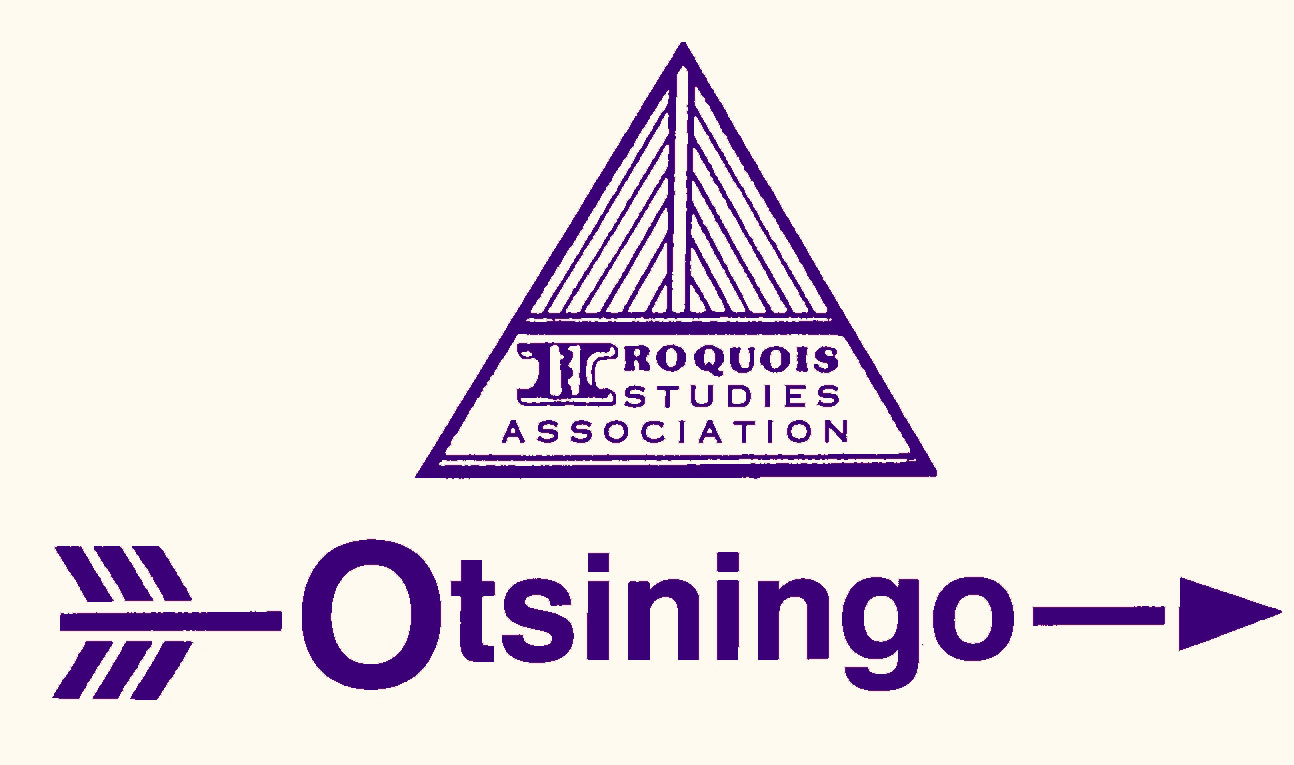

Ste. Marie Among the Iroquois
Ste. Marie has ceased operation under that name. The site is now open as Ska-nonh Great Law of Peace Center. Visit them the center's website at www.skanonhcenter.org
Ste. Marie De Gannentaha
(Ste. Marie Among the Iroquois)
Living History Museum
In Liverpool, New York, overlooking Onondaga Lake’s east shore, is a hillside on which the Onondaga County Parks, Historical Society, and many interested people have worked to reconstruct a slice of early history. Consisting of a parking lot, picnic facilities, a modern building with a gem of a gift shop and numerous handson exhibits, and informative, mood enhancing displays, the visitor’s first impression is of a two story indoor center where individuals and tour groups of all ages can learn.
However, there is much more than this! Outdoors and up slope from this picturesque center, are gardens and a fenced in settlement, with a small turret/overlook, pigsty, living facilities with open fireplace, cabinet shop/blacksmith barn, and church meeting house. On many occasions, there are people in traditional dress. Speaking the Jesuit French that would have been the language of the times, they ask visitors questions that are fitting to the time and place they represent, in English when necessary. Again, there are opportunities for visitors to sample foods cooked over the fireplace, experiment with the wood working tools, and examine some of the other equipment used, manufactured, and displayed in the settlement.
Historically, Ste. Marie de Gannentaha was a French settlement occupied from 1656 to 1658. Records of it include James Geddes’ 1797 survey map of the "Old Stockade," and an elaborated version from an 1849 history book. These documents were discovered in 1974.
As often occurs, however, there was an effort in 1933 to develop a "reconstruction" of the settlement, using public works personnel. No archaeological preliminaries occurred and a "convenient spot" was chosen for the construction project. Many people, especially generations of school children, remember the resulting phe-nomenon as the French Fort they visited with school groups.
In 1974, though, changes in orientations of cultural heritage studies and greater emphasis upon accuracy in museum displays led to the creation of Onondaga County’s Office of Museums and Historic Sites. Exploratory excavations of a trench in Lot 106, the "true site" according to Geddes’ map, were carried out by a joint crew of Museums’ Office personnel, including Den-nis Connors, and amateur volunteers from the William M. Beauchamp Chapter of the New York State Archaeological Association (NYSAA). Connors provided the archival information about the site. Gordon DeAngelo (New York State Department of Transportation and NYSAA) drew detailed site maps which were utilized in 1979 when Pratt and Pratt Archaeological Consultants were hired to expand the previous excavations.
The 1974 excavations uncovered a series of postmolds (circular discolora-tions in the soil indicating where posts had been placed in the soil, and probably had rotted or been charred once the structure was abandoned). Unfortunately, these lacked associated French artifacts to prove the posts had been installed as early as the 1650's. However, a fragment of green-glaze pottery, thought to be of early French manufacture, was found nearby in the excavations, hinting of this time period. Pratt and Pratt personnel reopened the (backfilled) excavations from 1974, and expanded these to follow the post-molds. This work yielded red glass trade beads, smoking pipe fragments, and a portion of a musket firing mechanism, believed to date to the mid-17th century. Map expansion of the excavations was done by DeAngelo, and the resultant diagram, when correlated with the artifactual materials, reinforced the view that this was, indeed, the site of the French stockade of 1656-1658.
Why has the new Ste. Marie among the Iroquois Living History Museum been constructed in the area utilized in 1933, and not on Lot 106? Lemoyne Manor Restaurant and its parking lot are located there, and have been in that spot for many years. Indeed, it would appear that part of the French settlement occupied the same spot. Although "purists" might insist that the reconstruction of the early historic site is less "authentic" when located about 800 yards northwest of the "real site," removal of the modern structures is not feasible. A reconstruction is never 100% accurate, and documentary analysis of archival resources in Canada and the U.S. yielded information about mission personnel, but little new data about the appearance of the structures. Therefore, use of an adjacent parcel of land, owned by Onondaga County, is justifiable.
The resultant museum, with its trained personnel, is worth the price of admission. Since there are numerous special events scheduled throughout the year, indoors and out, visitors may want to contact the Visitor Center to determine when these will occur.
Ste. Marie among the IroquoisContributed by Ellis McDowell-Loudan